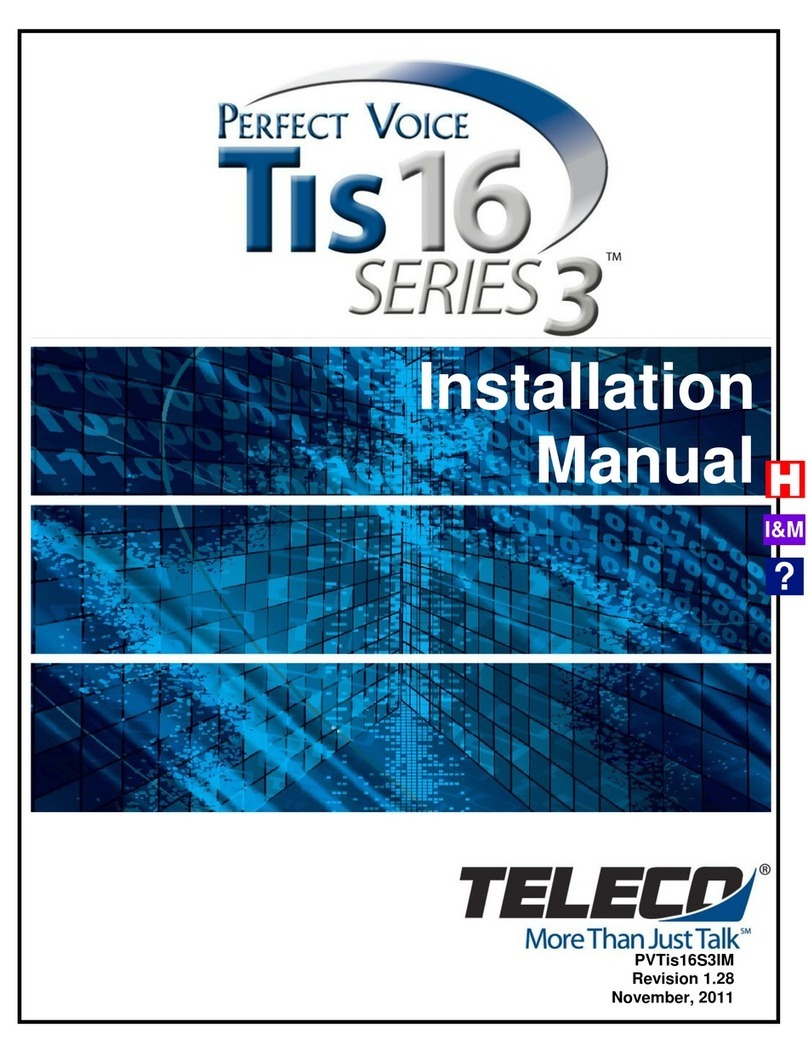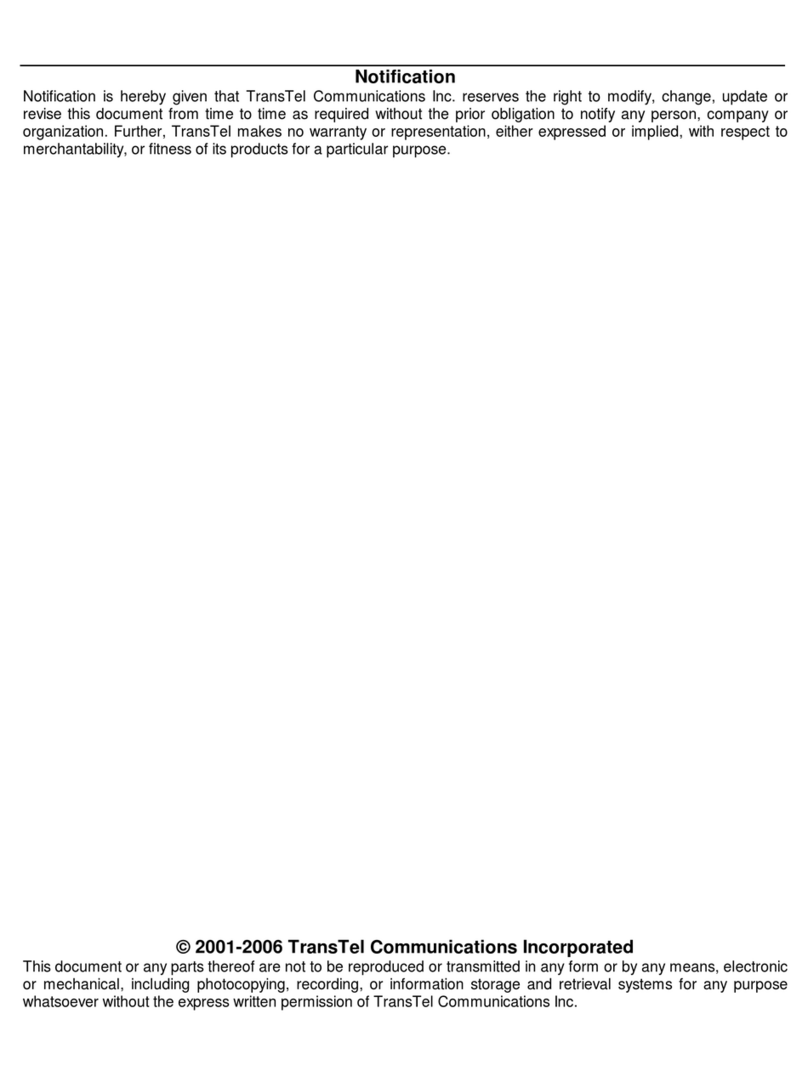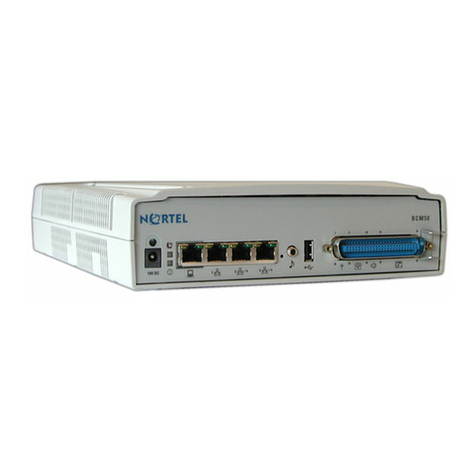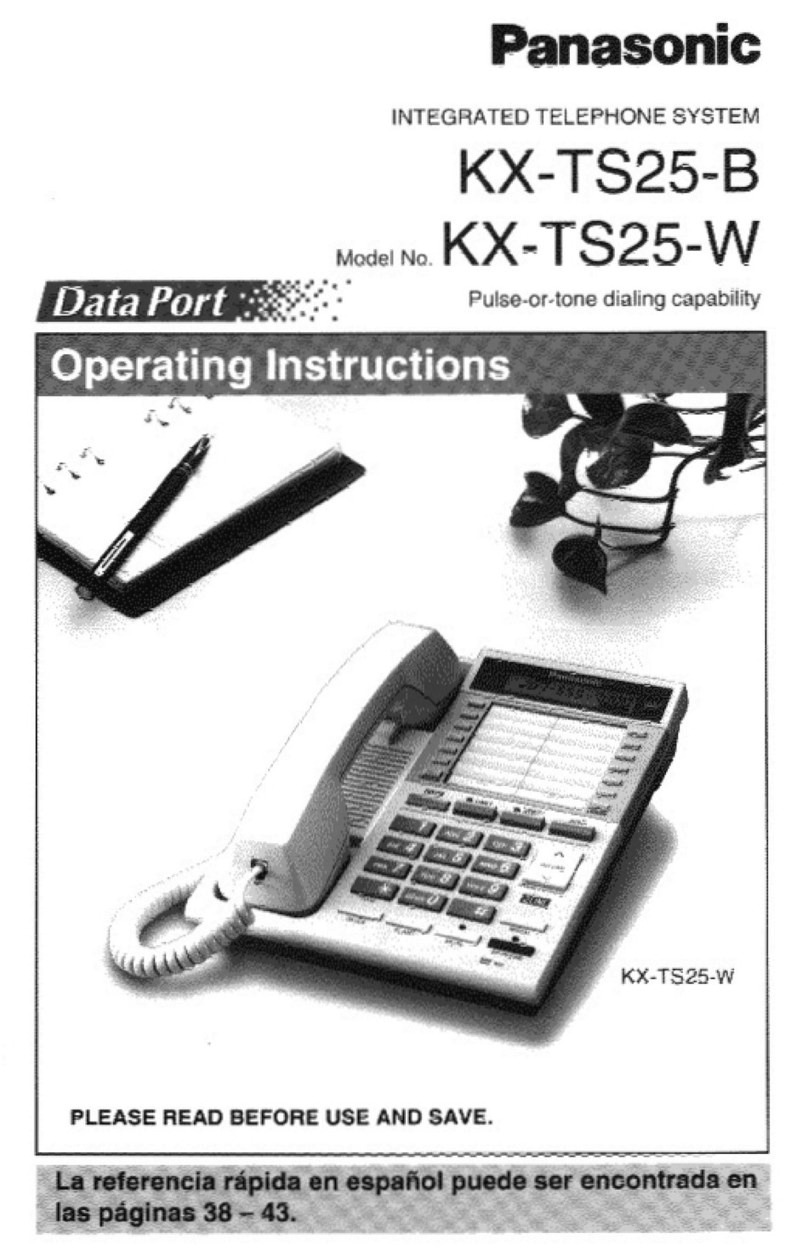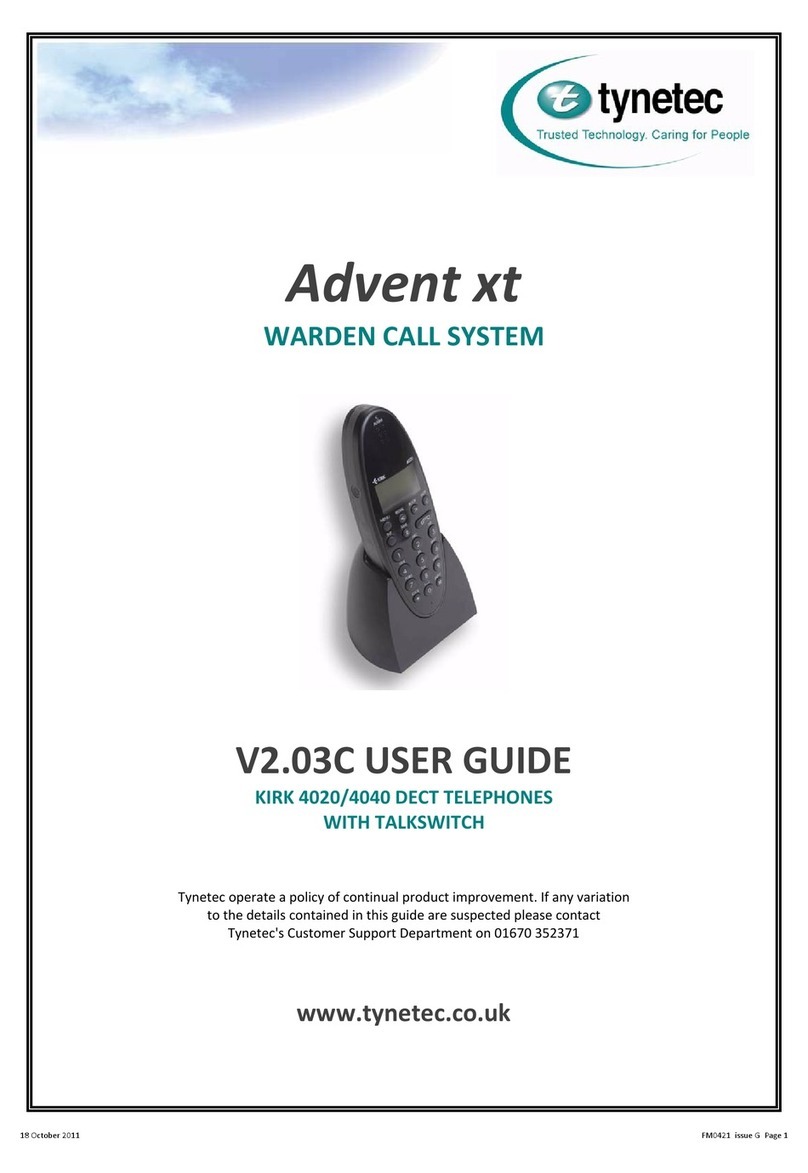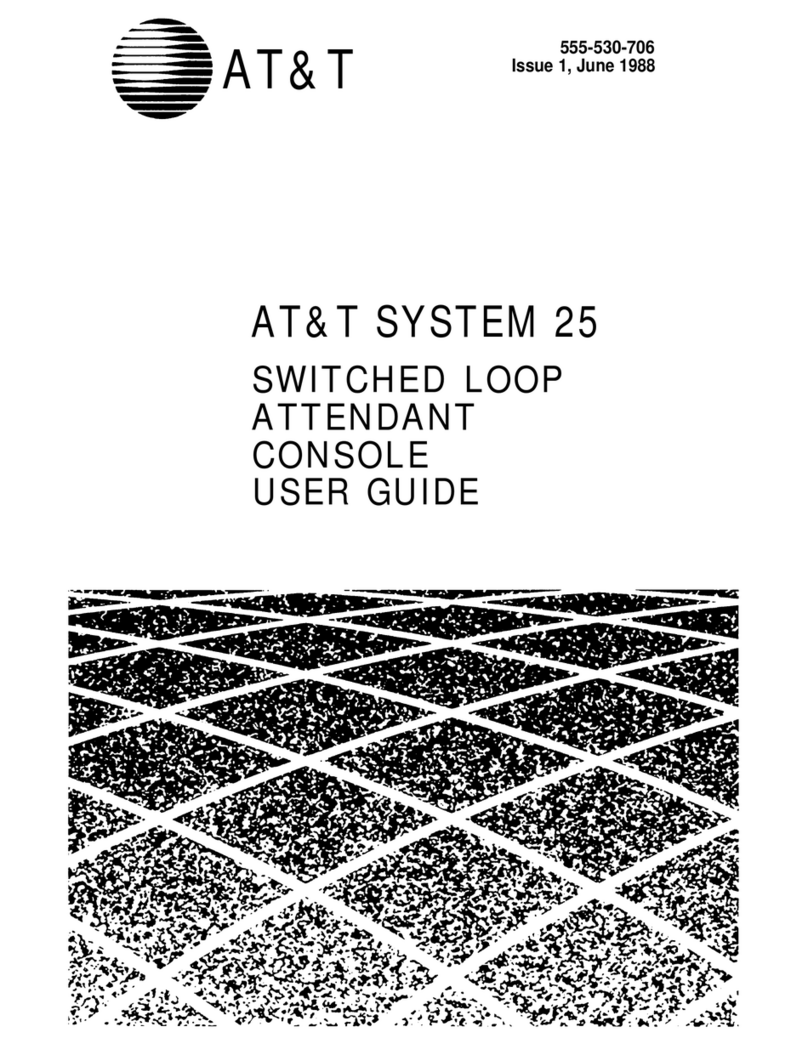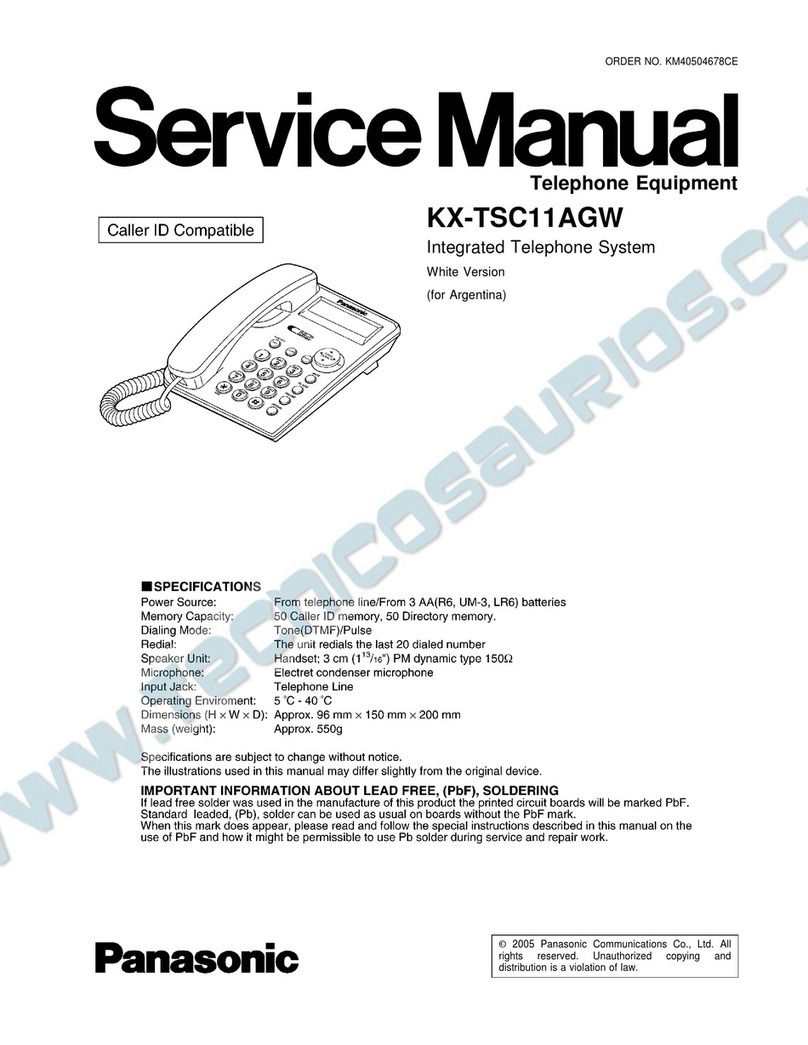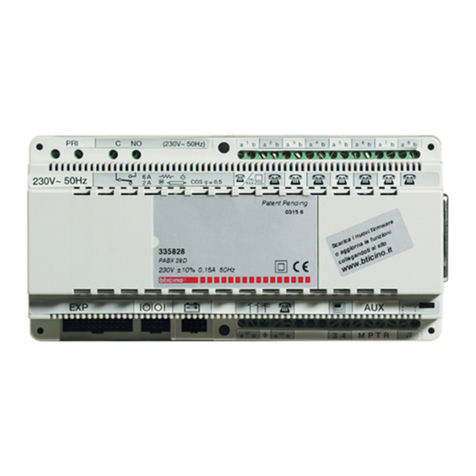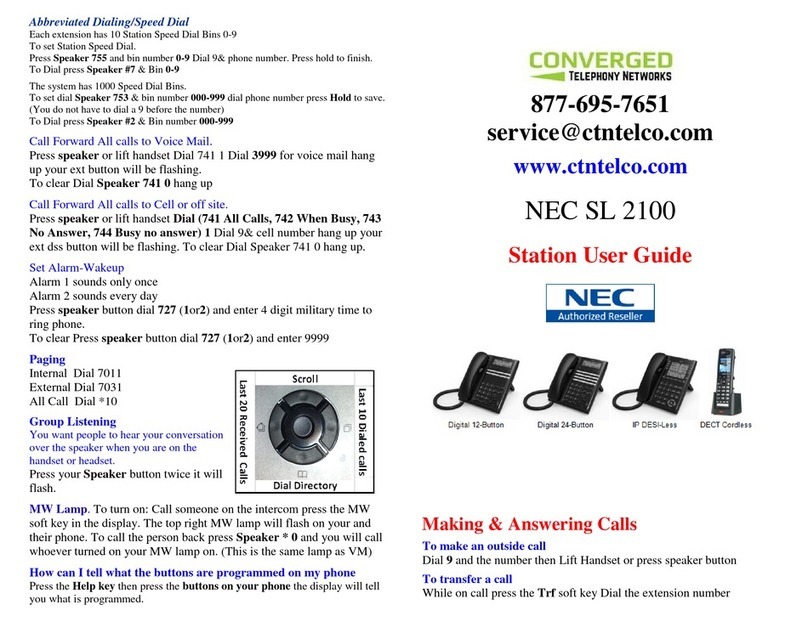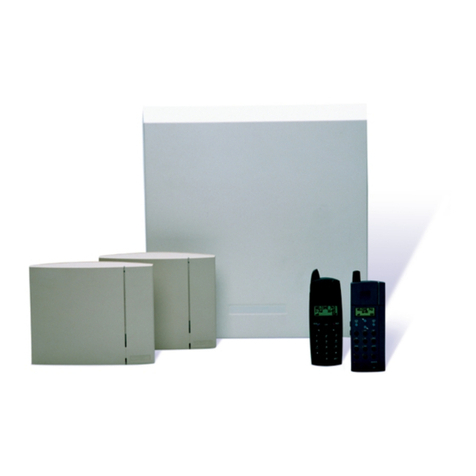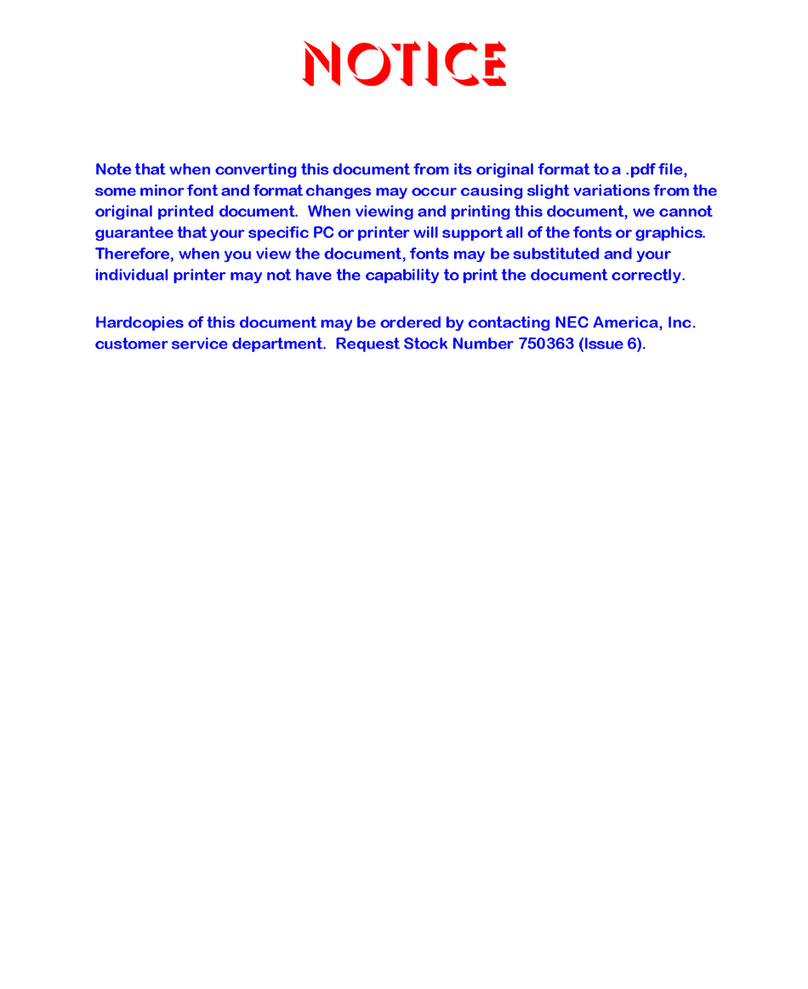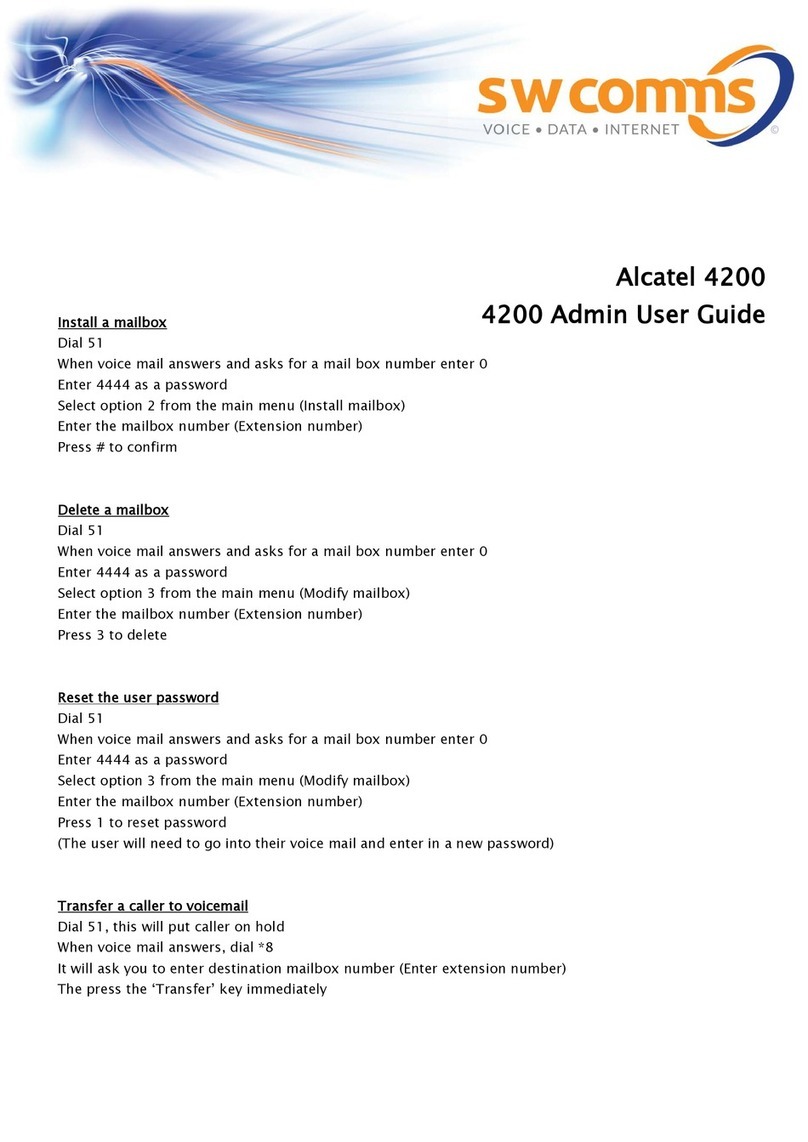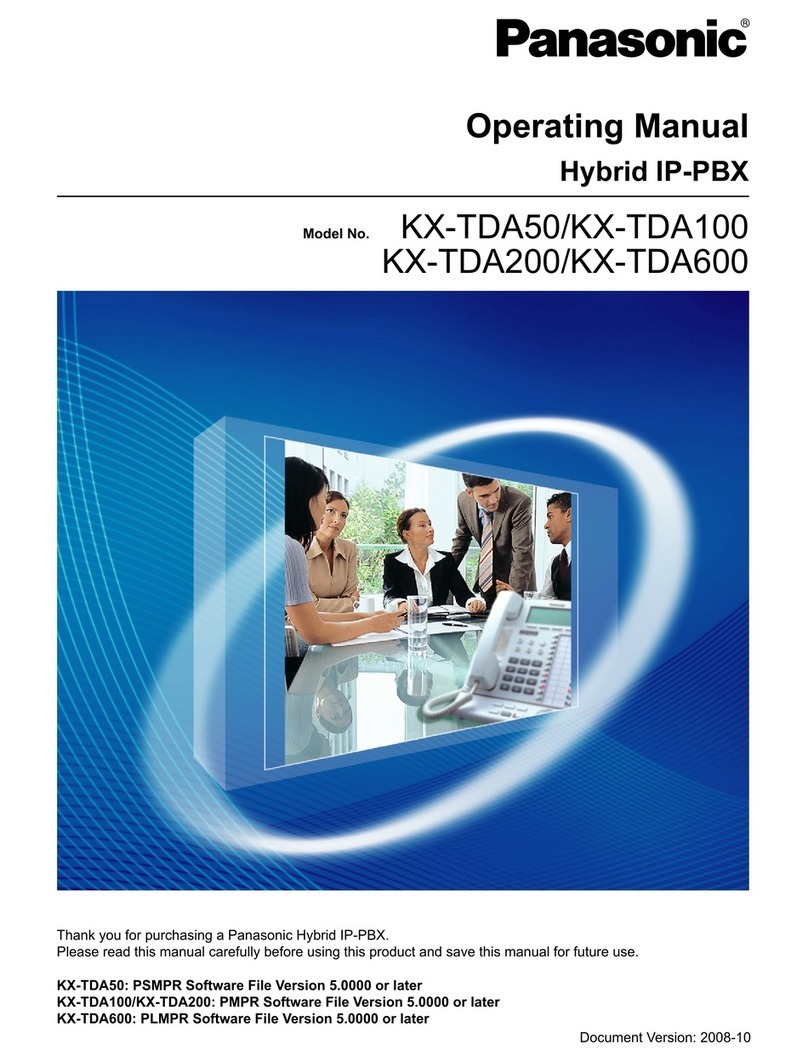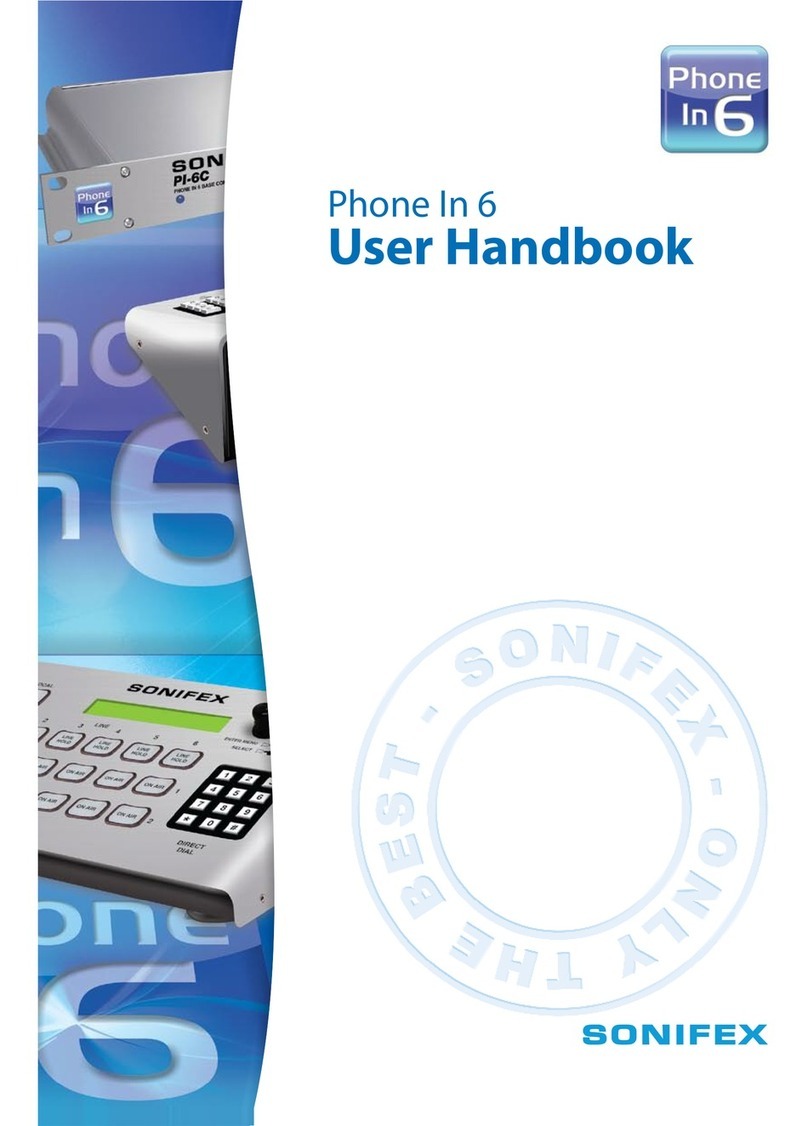Table of Contents
Table of Contents - ii
System Check ................................................................................................................3-31
System Programming .....................................................................................................3-31
System Programming Back-up .......................................................................................3-31
Moving Office.........................................................................................................................3-32
Chapter Four Programming .......................................................................................4-1
Overview..................................................................................................................................4-1
Passwords........................................................................................................................4-1
Programming Keys...........................................................................................................4-2
Memory Clear..................................................................................................................4-2
Menus.......................................................................................................................................4-3
01: Repertory............................................................................................................................4-3
02: Lock (Enable / Disable )......................................................................................................4-3
03: User Programming ..............................................................................................................4-4
01u Personal Speed Dial Numbers....................................................................................4-4
02u One-Touch Speed Dial Numbers...............................................................................4-4
03u Headset Enable/Disable.............................................................................................4-5
04u Paging Enable/Disable...............................................................................................4-5
05u Password ..................................................................................................................4-5
06u Call Waiting Enable/Disable ......................................................................................4-5
04: Administration Programming...............................................................................................4-6
01a Set Time....................................................................................................................4-6
02a System Speed Dial.....................................................................................................4-6
03a PSTN Line Access (Day/Night).................................................................................4-7
04a Station Call Barring Class (Day/Night) ......................................................................4-7
05a DSS Extension Display..............................................................................................4-8
06a Send Data..................................................................................................................4-9
07a User Password Reset.................................................................................................4-9
08a Admin Password .......................................................................................................4-9
09a Ring Mode - PSTN (Day/Night)..............................................................................4-10
10a Remote Report........................................................................................................4-10
11a Serial Number .........................................................................................................4-11
12a Hold Reminder Time (Day / Night ).........................................................................4-11
05: Installation Programming ..................................................................................................4-12
01i Number of Stations..................................................................................................4-12
02i Number of AFU Ports..............................................................................................4-12
03i Number of External PSTN Lines..............................................................................4-13
04i Barred ISD Prefixes.................................................................................................4-13
05i Barred STD Prefixes................................................................................................4-14
06i Mobiles Prefixes.......................................................................................................4-14
07i Common Allowed Prefixes.......................................................................................4-15
08i PSTN Line Settings..................................................................................................4-15
09i PABX Access Digit..................................................................................................4-16
10i Music on Hold Source..............................................................................................4-16
11i Install Password.......................................................................................................4-17
12i Door Station (Day/Night).........................................................................................4-17
13i Devices (Fax, Answering Machine, Door Station) ....................................................4-18
14i Interdigit Time-Out..................................................................................................4-19
15i Timer Door Opener..................................................................................................4-20
